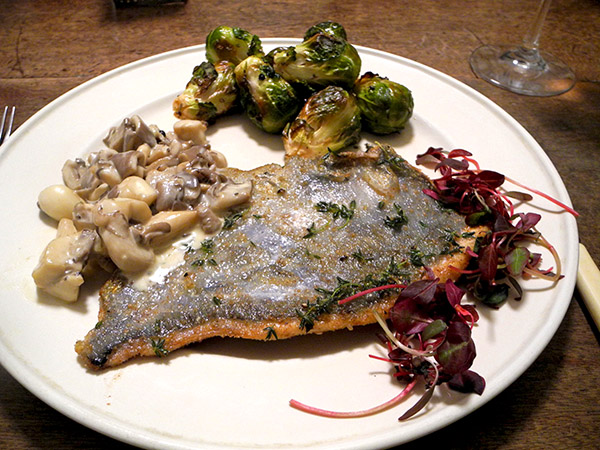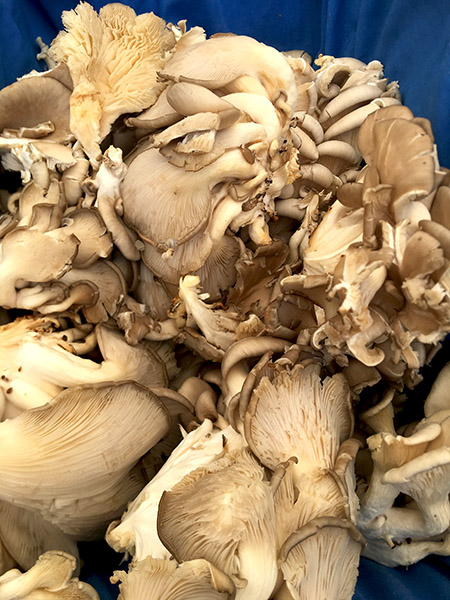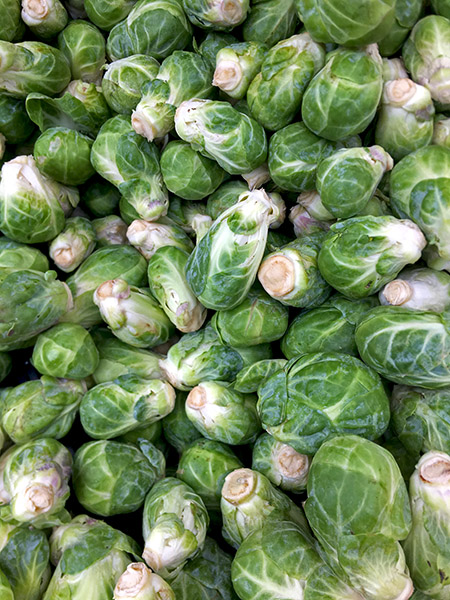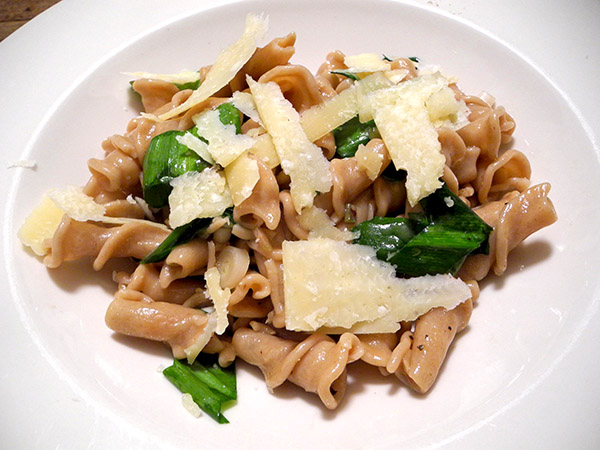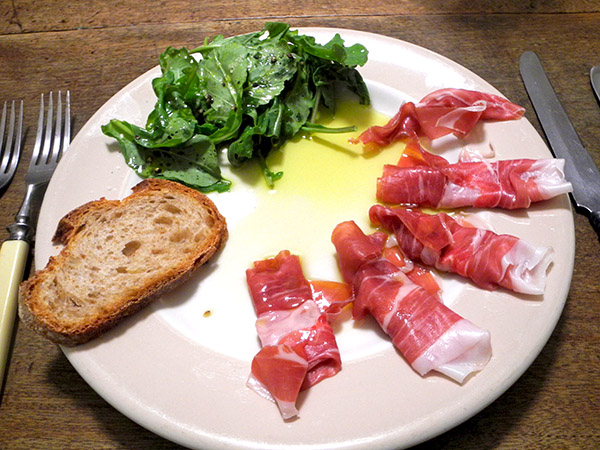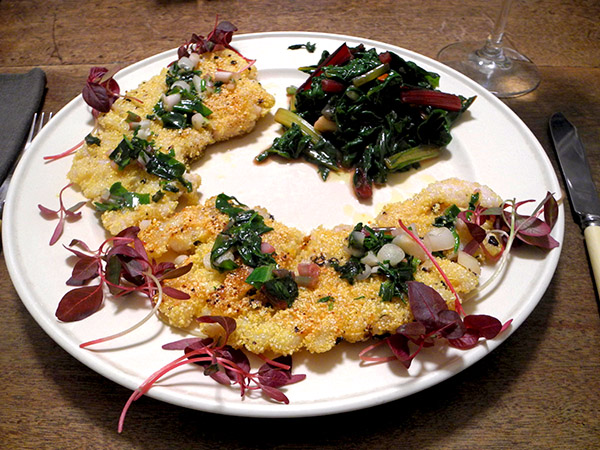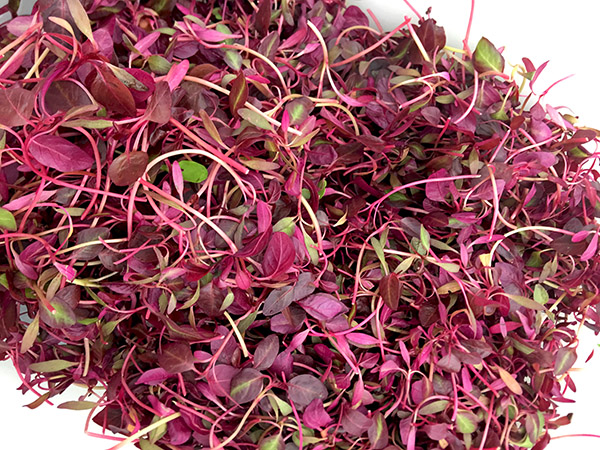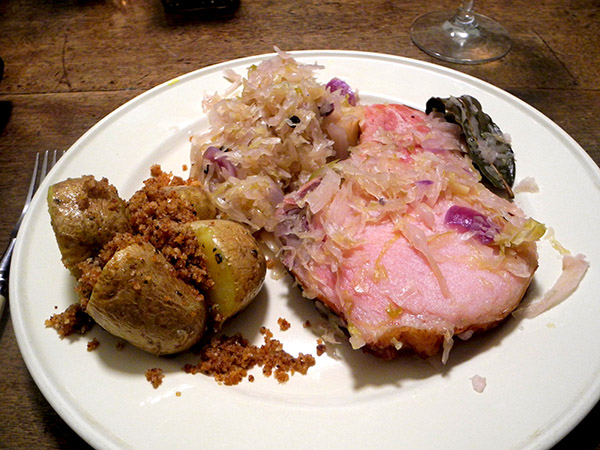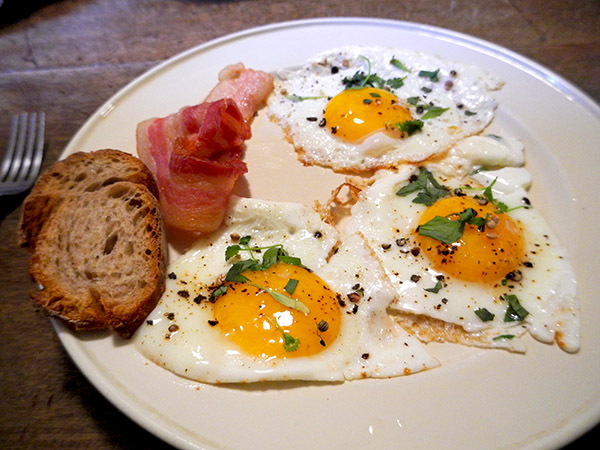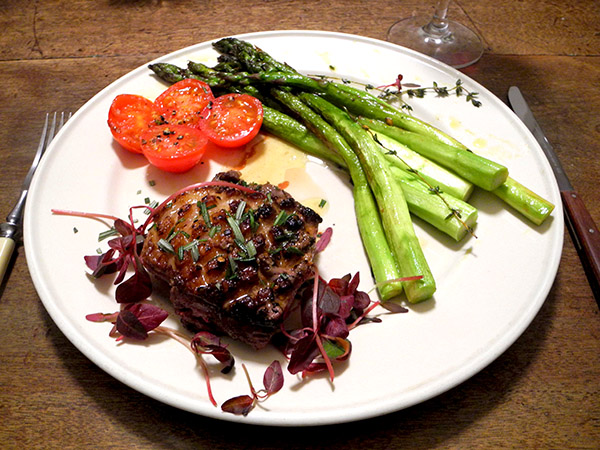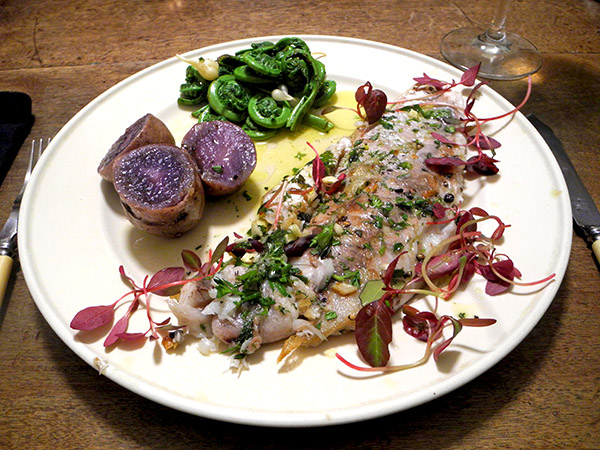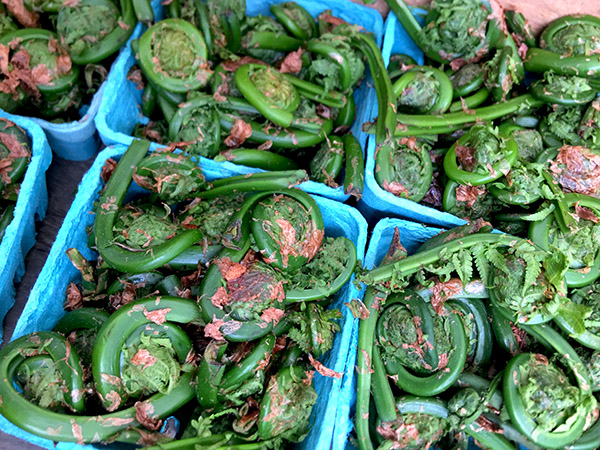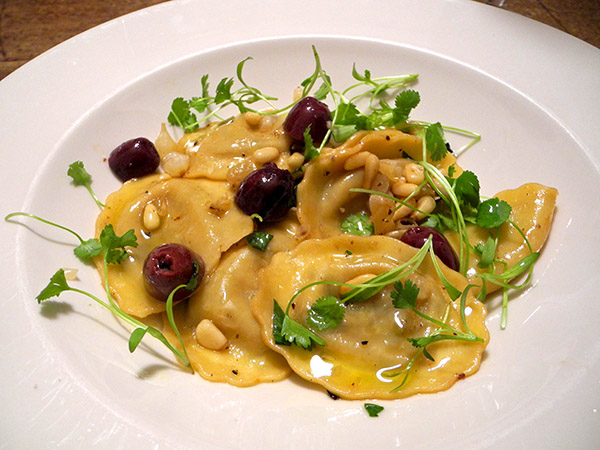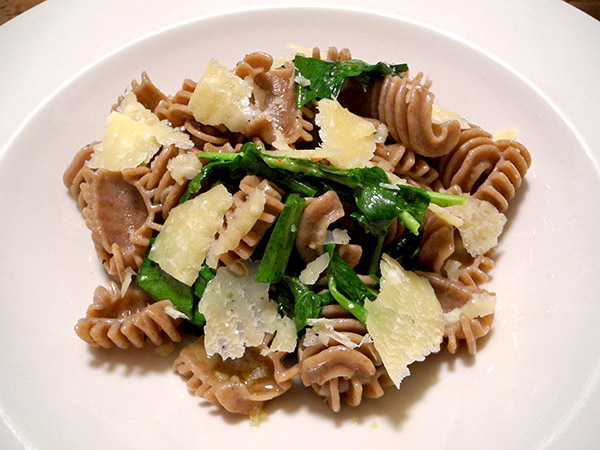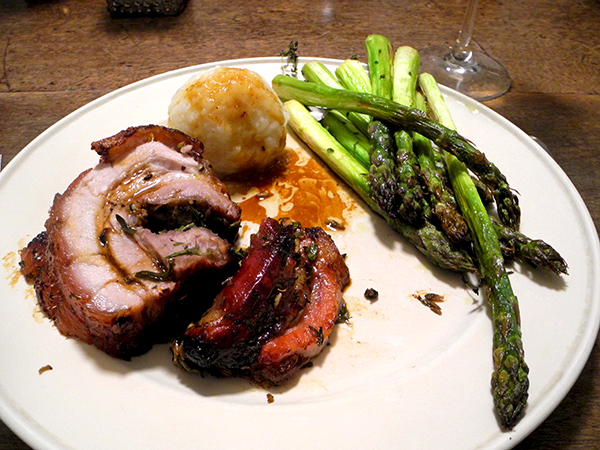
I had expected to reserve a third of the little roast for another day, but, seduced by the appearance on the plate of one slice, I decided it wouldn’t hurt us to have it all last night.
I become slightly obsessed with the idea of preparing pork belly, but when I had finally purchased a piece uptown on Tuesday I still had little idea of how I would cook it. I put it off for several days, deciding that each of the suggestions I found required more preparation and cooking time than I would be able to allow myself.
On Thursday I was ready.
I’d thought I would end up with a German meal, and had purchased a package of frozen German potato dumplings at the same time as the pork, but the formula I went with (mostly) was totally Italian (I kept the Kartoffelklöße, because I knew there might be the makings of a sauce, and they’re designed for a sauce; also, I really, really like Kartoffelklöße.
Altogether, the menu was something of a hybrid.
I had a lot of fun preparing and assembling the rolled roast, and I enjoyed the 2-hour break in the middle of the process. It took only a few minutes to make the sauce, and the vegetables were almost an automatic process, once they had been trimmed.
I had purchased those thick asparagus spears on Monday and kept them in water inside a vase on the counter. They had been a ‘given’ for this meal from the very beginning (or even before) and so of course they stayed to the end.
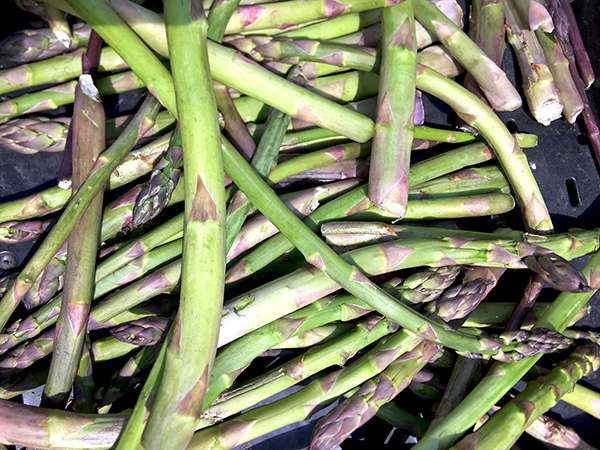
Everything looked wonderful on the plates, and it was all really really delicious. There was also that aroma going on for hours!
The cost of the pork was surprisingly modest, especially considering its merits, something which gladdens the heart of almost any homecook.
The actual process left me with one question about the meat, but it’s really only a technical one: There were almost no juices in the pan at the end (although I was able to coach what there was into a terrific sauce), so where did all the fat disappear to?
- one piece (22 ounces) of pork belly from Schaller & Weber, washed, thoroughly dried, scored through the skin layer only along the narrow width at one-inch intervals, in order to ensure crispiness in the end, and ease in carving, placed skin side down, rubbed with sea salt, and some coarsely-ground Tellicherry pepper, covered and left alone for 15 minutes, 1 teaspoon of fennel seeds, previously heated inside a small cast iron frying pan until they had become wonderfully fragrant, 2 squashed garlic cloves from Berried Treasures, zest from half of a sweet local lemon from Fantastic Gardens of Long Island, and lots of fresh thyme, sage & rosemary, all from Stokes Farm, leaves removed from stems and roughly chopped, placed on top of the belly, which was then rolled up, tied in 3 places with butcher twine, rubbed with a tablespoon of olive oil, a generous amount of sea salt, and more pepper, placed inside a small, high-sided, oval enameled cast iron pan previously coated with a little olive oil, set inside an oven pre-heated to 450º for 9 or 10 minutes, turned over, the other side cooked for 7 more minutes, after which the temperature was lowered to 300°F , the roast cooked for slightly longer than 2 hours, turning occasionally (I did it every half hour), removed and placed inside a small low-sided pyrex pan on the top of the oven, 3 or 4 tablespoons of a local Linden honey from Tremblay Appiaries, mixed with the juice from half of the lemon mentioned earlier, poured over it, then allowed to rest for at least 20 minutes, sliced into 3 sections (the third, or larger end piece was later halved and distributed onto the plates with the first 2, for reason mentioned earlier) while a sauce was prepared by pouring the cooking juices into a gravy separator (for convenience), the bottom of the pan scraped with a wooden spatula, the lean gravy at the bottom of the cup poured back into the pan, which was now set over a flame and a couple tablespoons of a good white wine added, and reduced, then removed from the heat, allowed to cool a bit, and several tablespoons of butter added and swirled in, and the honey-lemon drippings under the roast sitting in the small pan added to complete it, finally placed inside a sauce boat and, once the meat and dumplings had been arranged on the plates, ladled onto both
- two potato dumplings [Kartoffelklöße], ‘Melle’s Best Kartoffel Knödel’, purchased frozen from Schaller & Weber, defrosted the day before, boiled for about 12 minutes in salted water, drained and arranged on the plates, finished with some of the roasted pork sauce
- 18 or so mostly short, thick stalks of asparagus from Phillips Farm, trimmed, much of the length of their stems peeled, rolled along with a handful of thyme branches from Stokes Farm with a little more than a tablespoon of olive oil, a little sea salt, and a bit of freshly-ground Tellicherry pepper inside a large Pampered Chef unglazed ceramic pan and roasted at 425º for about 25 minutes, or until the thicker sections were just tender
- the wine was a French (Rhône) white, La Borry Côtes du Rhône Blanc 2006
- the music was Kalevi Aho, Chamber Symphonies No 1 and 2, Stefan Asbury conducting the Tapiola Sinfonietta, and No. 3, with Jean-Jacques Kantorow conducting the same ensemble
